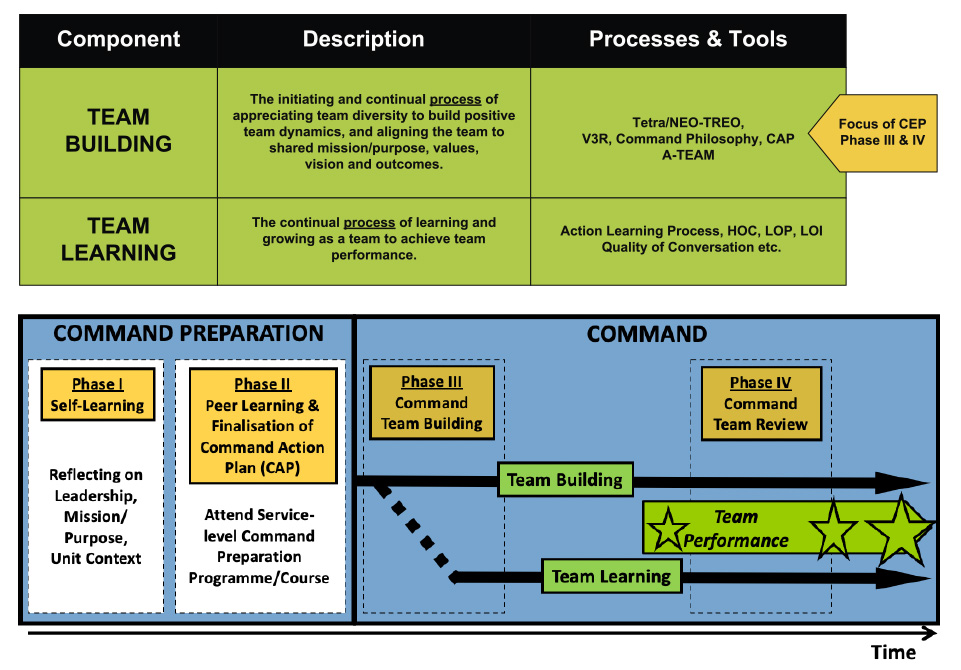SAF Command Effectiveness Programme (CEP) is a series of structured programmes, where LD tools and processes are introduced as part of commander's and command team preparation, key in enabling enduring capabilities at the unit and individual leader/commander levels.
CEP supports systematic LD and is in service of Nurturing and Engagement efforts. The SAF CEP is a holistic framework through which current LD initiatives such as the IDP, ALP and Commanders' Development can be put together to serve higher order outcomes of Nurturing and Engagement, to continually develop individual leaders in the units.
The set of tools and processes in CEP are based on best practises in Organisational Development (OD), introduced in the SAF primarily in a peacetime training context. The term "Command Effectiveness", as compared to OD, was a more acceptable term in our military context in 1995 when CEP was first introduced in the Army (3 Div).
As a Commander, if you use the CEP tools and processes well, it will serve to develop your leaders and strengthen your units' social fabric and operational structures. The tools and processes are content and context-free so that the 3 Services can select and develop their respective modules and materials for implementation.
The desired outcomes and impact of CEP are shown below:

The CEP is therefore designed to minimise the blind spots surrounding the intricacies of unit command, and through self-motivated learning, help COs be aware of the wider spectrum of command.
To achieve this, a systematic 4-phased process consisting of self-reflection, group-learning, sharing by experts, discussions and individual formulation of a Command Action Plan (CAP) is used.
The Four Phases in Brief:
Phase 1: Selection and nomination with PMCs' support in identifying Officers for Pre-Command Course; appointed CO to be interviewed by Service Chief/Division Commander and to obtain CPG for command.
Phase 2: This phase will require Commanders to develop their Command Vision, Philosophy and Strategy which they will share with outgoing COs and Formation Commanders. COs will produce a final draft of their Command Plan to be shared with their Command Team.
They will be introduced to CEP tools and processes to ensure continual leader development and to strengthen their command structures. This is implemented as part of Commanders' Training through a structured CEP curriculum in Pre-Command Courses/Post-Squadron Command Courses, supported by SAF CLD and SAF Executive Coaches.
Phase 3: This phase involves the Command Team Building for Team Learning as facilitated by SAF Executive Coaches. The Command Team involves the CO, PSOs, RSM, OCs and CSMs (or equivalent appointments). The CO and the Command Team will work through the shared Vision, Rules, Roles and Relationships (V3Rs) and with the collective thinking, develop a Command Action Plan (CAP) for their unit's operationalisation.
Phase 4: Command Team Development programme self-facilitated and Command Transition programme facilitated by SAF Executive Coaches; this will require the Command Team to revisit the command plan, assess command team performance, the challenges and way ahead.
Thus, with the 4-phased CEP, COs will be adequately prepared to kick-start their unit CEP in a systematic manner to ensure continual leader development and effective command of their units.
Additional Resource(s) Here: